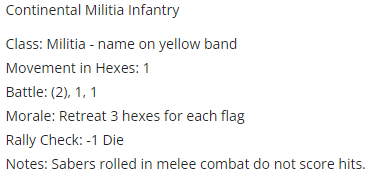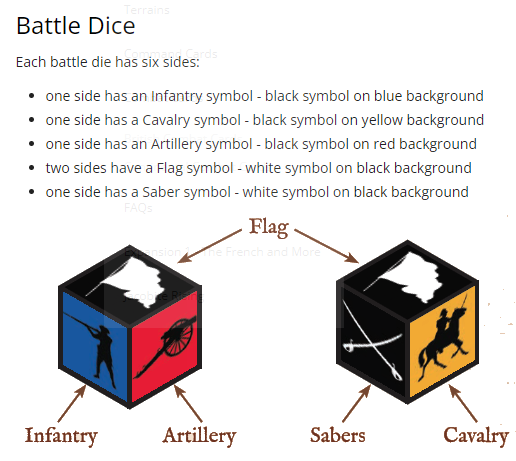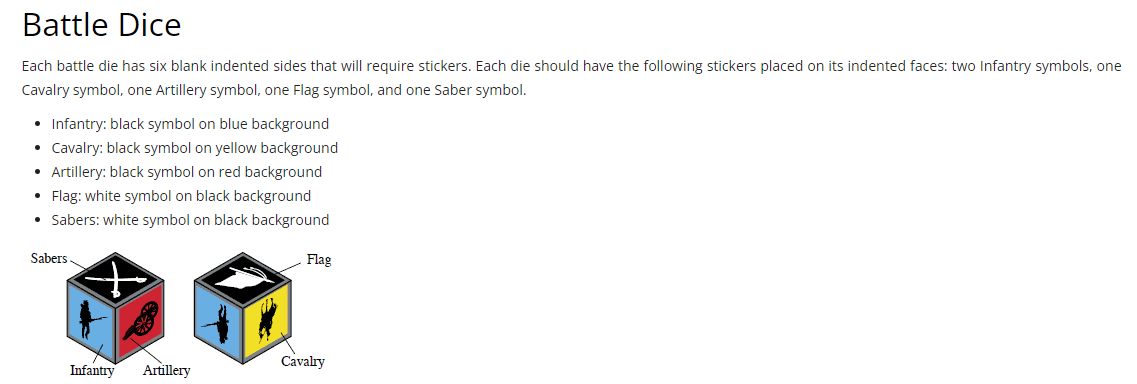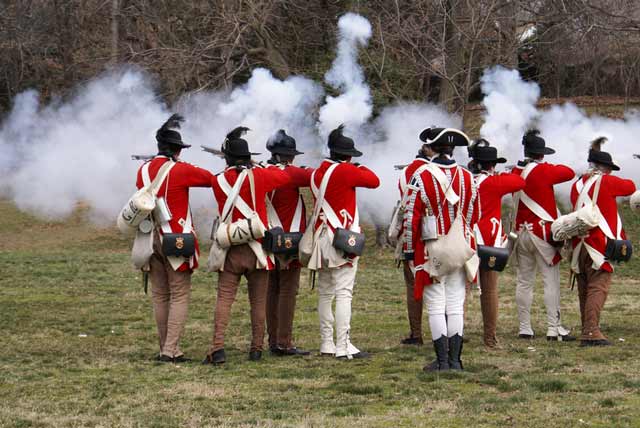Commands & Colors: Fighting in the Black Powder Era
By Mitch Reed
In our last article, we did an overview of all the games in the Commands & Colors series by Richard Borg. In this article we will compare how the core game mechanics are tweaked for two of the games that take place in the black powder era, C&C: Tricorne (CC:T) which covers the American Revolutionary War, and C&C: Napoleonics which covers the wars in Europe that started about twenty years later and shows how the subtle changes in the rules give you a unique period flavor for each game.
Each game uses the same basic mechanics that is shared throughout the entire C&C franchise, however, changes in how combat dice are calculated, the dice themselves, and some unique rules give each game a different experience and is not just a “re-skin”. The first point to explore I how much did warfare change in the two periods. In some cases, the changes were massive but overall, the weapons and linear tactics used by armies of the period changed very little. The biggest change was perhaps the size and scale of the battles, where the largest battles in the ARW would be smaller than most of the major battles of the Napoleonic period.
This was because the armies were better organized into divisions, corps, and armies in the European wars. This organization led to better mobility which brought more troops to the battlefield which in turn created larger battles. Using the ARW as a template, some students of military science expanded the role of capabilities such as artillery, light infantry and cavalry during the Napoleonic period. Technology drives change in tactics more than any other factor, however, in between 1780 and 1800, very little groundbreaking technology was introduced to drive a considerable change in how battles were fought. Despite these factors, the differences in CC:T and CC:N are very noticeable to the player.


Ranged Firepower
While movement factors in both games are nearly identical, the biggest change in a unit’s characteristics is how combat dice are determined in each of the games. In CC:T the range (also identical in both games) determines the amount of combat dice you can roll which for a line unit is one die at two hex range and two dice at range one, this is increased by one if your unit is at full strength and if you have a leader in the hex with the firing unit. This is uniform in the game no matter the strength of the unit. In CC:N, you get way more dice.
A full-strength unit of four blocks gets four dice at any range which puts way more firepower on the target. Both games do penalize you for firing and moving during the same turn, in CC:N your dice get halved, and in CC:T you lose one die (except light infantry when moving one hex).
This change makes the CC:N game much bloodier and you end up retiring units down to one or two blocks so you do not give your opponent an easy victory banner. I have found that in CC:T I push ranged attacks more with my battle-worn units more than in CC:N. Also keeping a unit at full strength with a leader in CC:T (hopefully in defensive terrain) really creates problems for your opponent, attacking at three dice at a two hex range creates a good base of firepower in the game, it also attracts a lot of fire.
 Keeping the average CC:N unit up to strength is also much harder to do. In ranged combat you only suffer a loss if your opponent rolls an infantry symbol in both games, however, the dice have only one such symbol in CC:T and two in CC:N. So in most ranged attacks, you end up using more dice with better results in CC:N which gives you a better feel of how bloody the fighting was in this period. While CC:T is less lethal, the morale rules make up for it and I will detail that below.
Keeping the average CC:N unit up to strength is also much harder to do. In ranged combat you only suffer a loss if your opponent rolls an infantry symbol in both games, however, the dice have only one such symbol in CC:T and two in CC:N. So in most ranged attacks, you end up using more dice with better results in CC:N which gives you a better feel of how bloody the fighting was in this period. While CC:T is less lethal, the morale rules make up for it and I will detail that below.

Melee Combat
When it comes to how melee combat is conducted, the two games use the same mechanics as they do in ranged combat. CC:N uses block count whereas CC:T uses a fixed die system. In both games, certain units (Guards, Grenadiers, Light infantry, etc.) get bonuses and nerfs as you would expect based on the combat capabilities of these units.
Morale: The Game Changer
As I referenced above the battle dice dictate a lot on how combat is resolved. In CC:N the dice have two infantry kill faces, in CC:T the “retreat” result has two faces on the dice. The law of probabilities means that the more dice you roll the greater the chance you get an infantry kill in CC:N and a retreat in CC:T.
The main reason why this is so important is that CC:T units when they draw a retreat result, not only have to move back, but once they have finished this retrograde they have to take a morale check. This mechanic is not in CC:N.
In CC:T you role a number of dice based on how many blocks the unit has with some modifiers for unit type and if a leader is present. All you need to roll is one flag result the unit stays on the map, fail to do this the unit runs. This is bad for low-quality units such as militia or provincial infantry. This mechanic is compounded, so if your opponent gets two flag results in combat, you must rally twice. This leads to some units running away in the middle of the fight.

The major difference between the two periods is something the game gets correctly. Napoleonic battles had higher casualty rates, where the American Revolution saw many units just ran away, and I think to this day are still running. Players should note that this major flavor change is introduced by changing the die faces and adding a simple rule to the game.
Other Differences
A few of the rules in the game also change the flavor of each of the games. The way calvary is handled and how infantry can form a square is unique to CC:N. This illustrates the role cavalry played in Europe during the black powder era. The use of artillery is also a bit different in CC:N. You can fire as a “grand battery” and in CC:T you can fire and retire your artillery to the rear in some scenarios. These rules add so much to the unique environment of each game.
Cards
The heart of the C&C game is the command card mechanic that determines the location and number of units you can active during your turn.


While some of the command cards are the same in each game, the use of US and British combat cards in CC:T and the introduction of a universal tactician deck in CC:N (from expansion #5) adds so much to the game’s environment. In CC:T the cards are included in the basic set and are written expressly for each side with some overlap.
To get the tactician cards for CC:N you have to get the expansion “Generals, Marshals & Tacticians” which I really recommend adding to your CC:N collection. The only point I want to bring up here is that tactician cards unique for each nationality in the game would have been a bigger improvement to the game.

Cards that allow the British to hold on when attacked or the French to launch a massive infantry assault would have given the game even more authenticity. While some of these capabilities are intrinsic within certain units, it would have been great to add another decision point for players.

Design
For those who are fascinated by game mechanics or design games like me, you must appreciate how the designers added flavor without scrapping the original game design. If you look over my previous article on the C&C series, you will note that many different game companies produced games under the C&C banner. It seems that they were told “it works, do not F- it up” and the designers took heed to that advice.
Another takeaway as far as design is how the changes are subtle, the use of dice, cards, unit characteristics with only a few special rules is a good lesson for developers of an expansion of a franchise game on how not to overbake their design and make too many changes that may cause players to reject the series.

I play four of the games in the C&C series and rules creep is a real thing. I often have to remember what rules belong to CC:T and which are unique to CC:N. This is more of a personal issue since I tend to play a lot of games. Having a cheat sheet in front of you (check boardgamegeek.com for some good ones) will keep you on track as you go from game to game.
Hobby Impact
From a marketing perspective, the fact the C&C games share so much is a brilliant idea that reminds me of the old SPI Quad Games, one standard set of rules for many games with only a few changes in each title. Many companies do this since it builds and grows a fan base (permanent customers) for each expansion and exploits a proven commodity.
What I hope to have laid the case out for here is that this methodology does not stifle designers from introducing new mechanisms in their games and shows some level of risk they are taking with a game system that has proven the test of time.

This model also helps the gamer as well. We all try to play many games and our collections often overflow. With the C&C franchise, I find that these games make the table more often because I know the core rules and I can play an ancient battle with my son and then play an “epic” Napoleonic game on the same day.

One question I have seen that I wanted to dispel about C&C and many (not all) franchise games is that they are not just simple reskins of previous games. I have seen many gamers on social media making that claim, they can make such a claim however I feel in the case of CC:T and CC:N the facts above make this claim dubious at best.
Once you have gotten the taste of the core C&C rules all you have to do to expand your collection is pick a period you want to game and have fun.

Some pictures are taken from Commandsandcolors.net, an amazing fan site that covers this game.

Great review. I am a fan of C&C and love the core system and period rules mods. Same goes for Great Battles of History.
Great game. Really love this version.
Nice article, Mitch, but this is wrong: “This mechanic is compounded, so if your opponent gets two flag results in combat, you must rally twice.” You only have to rally once.